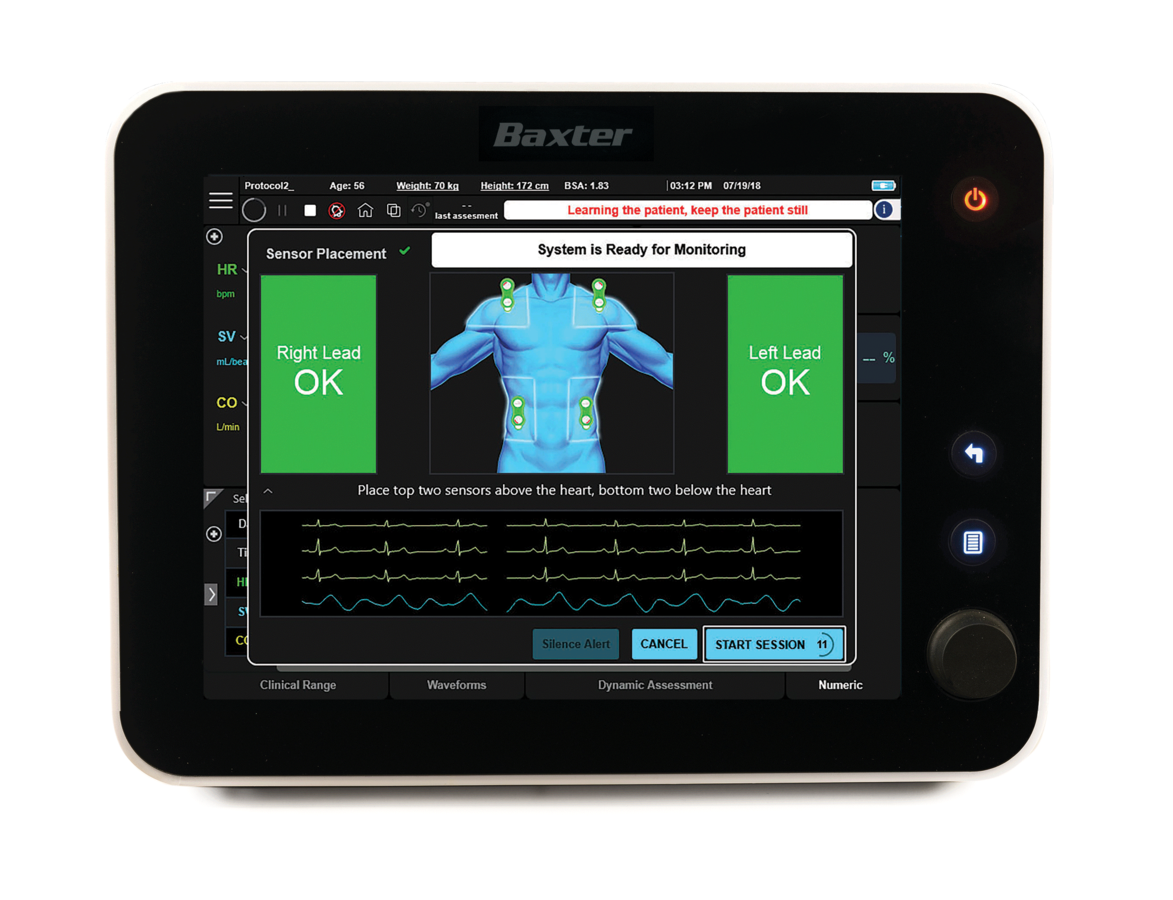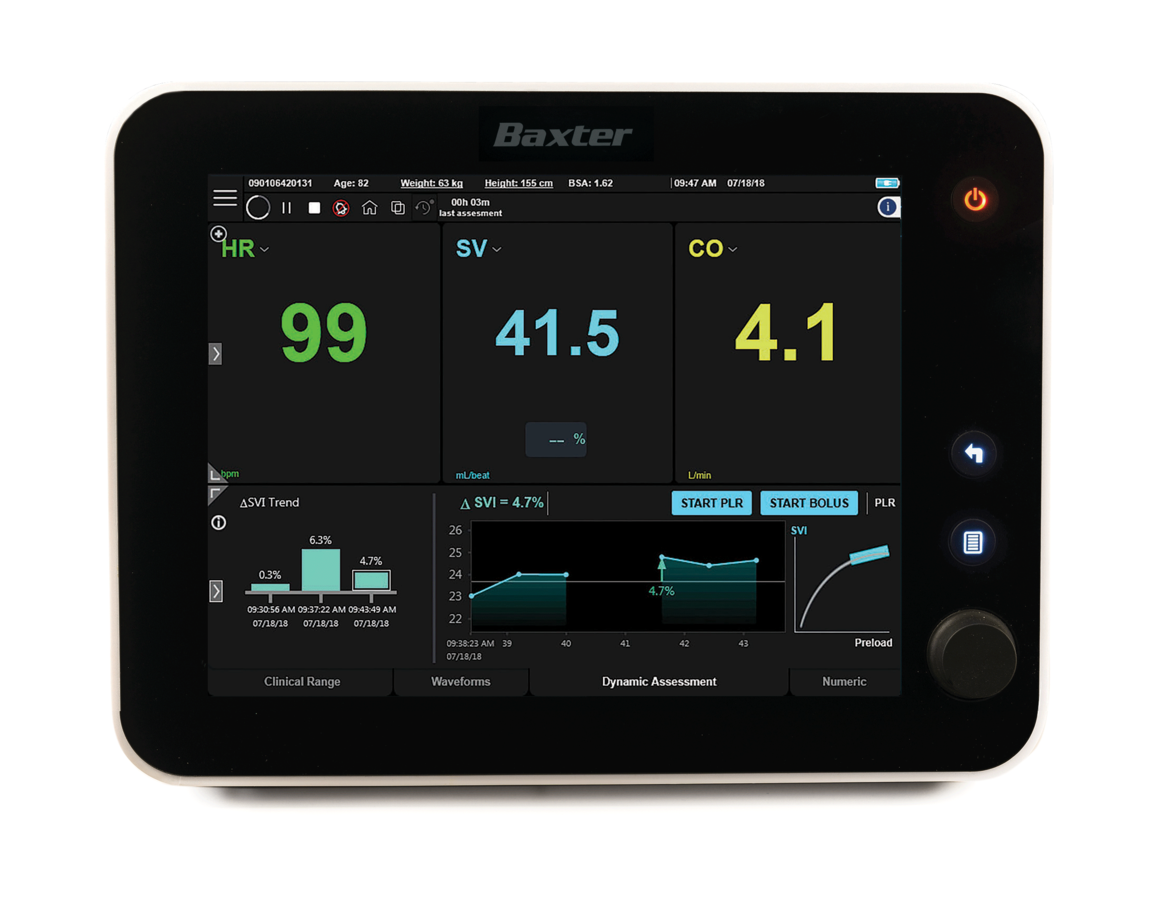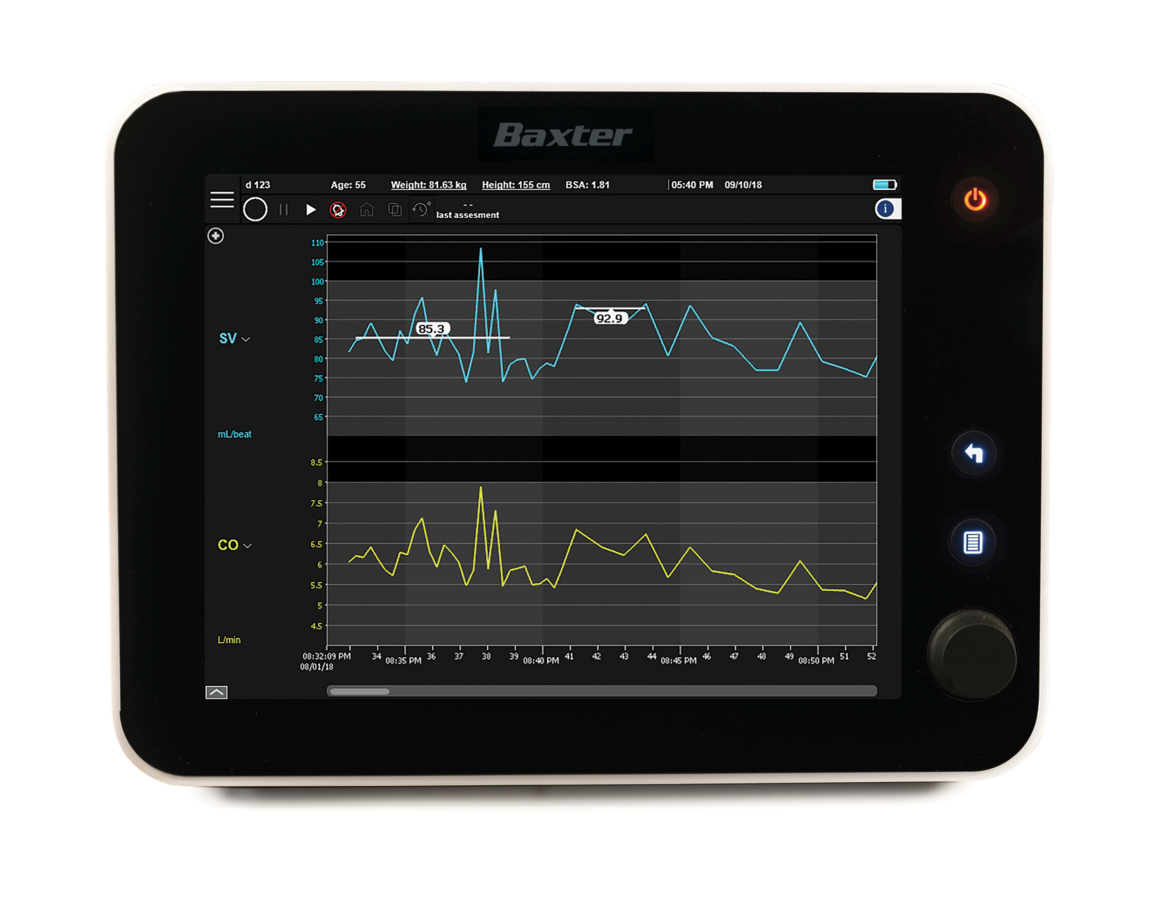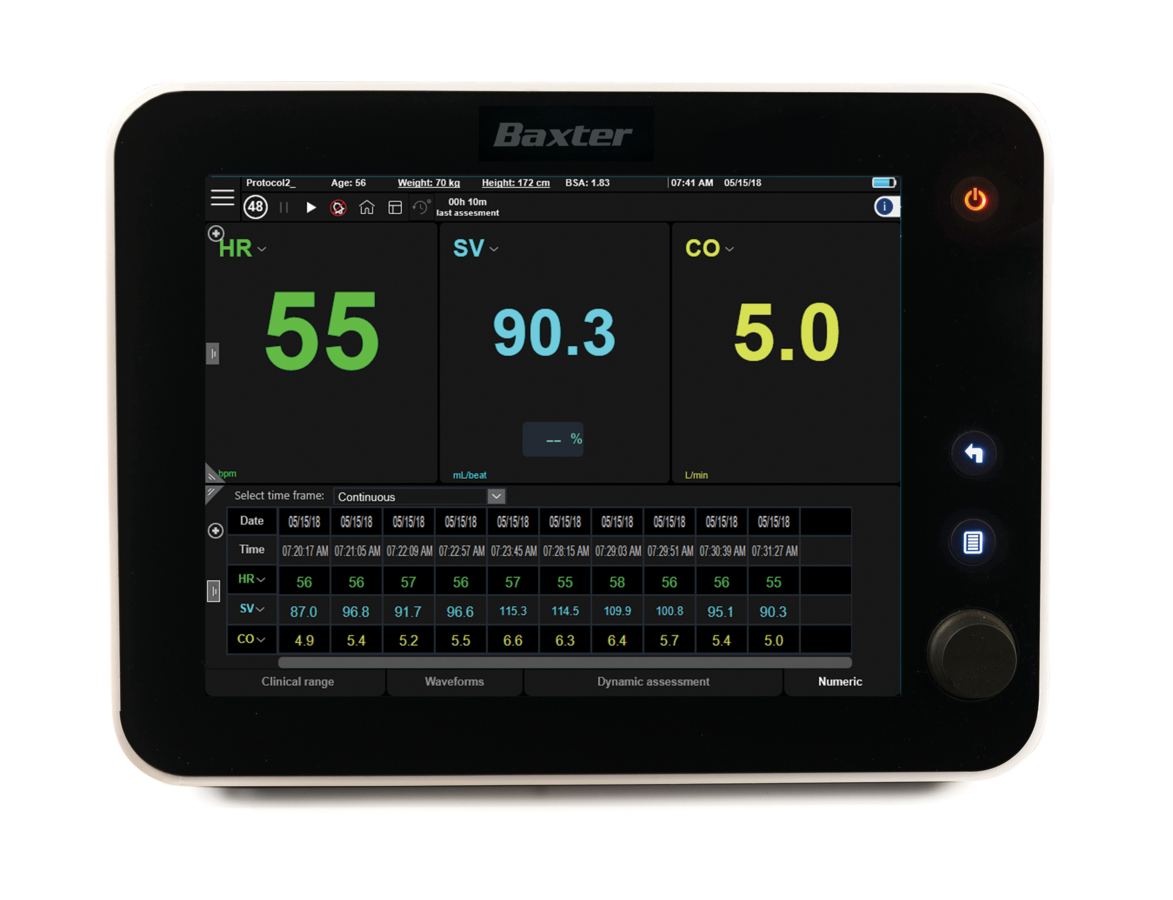Starling System Overview
ADVANCING INDIVIDUALISED PATIENT FLUID MANAGEMENT
The Starling system is a 100% non-invasive fluid management monitoring system that enables clinicians to respond to ever-changing patient status and administer intravenous (IV) fluids according to the patient's response. The Starling system offers an accurate, reliable and non-invasive method to measure central flow and deliver meaningful insights to guide clinical decision-making.1

MORE INFORMED CLINICAL DECISION-MAKING
Whatever the care area or the clinical challenge, effective fluid management is essential in achieving optimal clinical outcomes. Until now, the only choice for obtaining accurate, continuous haemodynamic measurements was invasive technologies with their own set of risks.2
With the Starling system, clinicians are provided with the important parameters continuously. Clinical status and the effect of interventions can be monitored at any time in any care area, and treatment can be modified accordingly.
The Starling system measures central flow and is quick and easy to use — and 100% non-invasive.1
100% non-invasive
Supports individualised fluid therapy without requiring an invasive arterial or central line, potentially reducing the risk of hospital-acquired infections and other complications3
Easy-to-perform dynamic assessments
The Starling monitor guides clinicians through a step-by-step approach for executing a passive leg raise or bolus test4
Real-time, continuous information
Provides real-time, continuous information on cardiac index, cardiac output, stroke volume index, stroke volume, total peripheral resistance and oxygen delivery

INTEGRATES AT EVERY STEP OF THE PATIENT JOURNEY
With easy setup and no invasive lines, the Starling system delivers quick access to real-time data to help improve diagnosis and treatment and facilitate fluid management, wherever the patient is in the hospital.
This includes supporting clinicians in the operating room, the emergency department, the intensive care unit, the clinic and the rapid response team.5-8 The Starling system may be used with both mechanically ventilated and spontaneously breathing patients, with no requirement to upgrade or change the monitor depending on severity of illness.7,9 The Starling system is designed to travel with the patient and support the various healthcare teams.
The Starling system is designed for use throughout your entire hospital, including critical care, operating room and emergency department settings.5-7
Critical care
Guided fluid resuscitation with the Starling system can help manage septic and shock patients.4,10
In the operating room and the surgical ICU
The Starling system’s flexibility allows for monitoring in preoperative, intraoperative and postoperative settings, enabling anaesthesiologists, surgical staff and nurses to proactively manage spontaneously breathing or intubated patients throughout their pathway.7-9,11,12
Emergency response to hypotension
Fluid management is vital in treating any hypotensive emergency. The Starling system provides the insight needed to stabilise a patient in the emergency department or during rapid response calls, where timing is critical.

EASY-TO-USE, FLEXIBLE INTERFACE
The Starling system offers a customisable home screen that provides users with the flexibility to choose their preferred view and parameters to be displayed on the screen, including cardiac index, cardiac output, stroke volume index, stroke volume, total peripheral resistance, oxygen delivery, cardiac power and thoracic fluid content, among other important parameters.
All the information is provided on one screen, including dynamic assessment results, so users can quickly and easily assess if the patient is fluid responsive. When additional guidance is needed, the Starling system offers educational tools built into the monitor — providing easy access to training videos, clinical tools and quick guides.

DETAILS THAT MAKE A DIFFERENCE
- Portable and lightweight touch screen monitor
- First results in approximately 48 seconds
- Easy-to-read graphics and parameters with responsive touch control
- Monitor fits on trolley or IV pole
- Battery operation
- Seamlessly integrates with hospitals' EMR systems
The Starling system interface provides easy-to-read graphics and parameters with responsive touch control.
SV STARLING Monitor — Non-invasive haemodynamic monitoring system.
Intended purpose: The Starling SV system, with NIBP and SpO2 functionality, is intended for professional use in healthcare facilities. It is a portable non-invasive haemodynamic cardiac output monitor. It monitors and displays a patient's cardiac output (CO) in l/min with a non-invasive blood pressure (NIBP) function that non-invasively measures and displays blood pressure (diastolic, systolic and mean) and heart rate, and an SpO2 function that non-invasively measures and displays blood oxygen saturation (SpO2). The device displays the corresponding haemodynamic parameters based on measurements or measurement calculations already incorporated in the Starling SV.
Class IIa device. Notified body: MEDCERT - Germany (CE 0482).
Please refer to the instructions for use for information necessary for proper use.
Carefully read the instructions in the package insert.
Date of revision: 31 March 2020.
Baxter and Starling are trademarks of Baxter International Inc. or its subsidiaries




